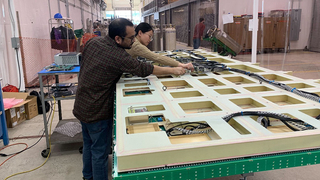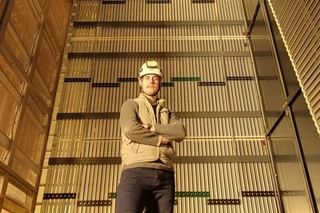Experiment Overview
The Deep Underground Neutrino Experiment (DUNE) is an international experiment that is being constructed to unlock the mysteries of neutrinos. DUNE will send a high energy neutrino beam through the Earth’s crust over a distance of 1,300 kilometers from Fermilab in Illinois to the Sanford Underground Research Facility in South Dakota to perform precision studies of neutrino oscillation.
DUNE will pursue three major science goals: find out whether neutrinos could be the reason the universe is made of matter; look for subatomic phenomena that could help realize Einstein’s dream of the unification of forces; and watch for neutrinos emerging from an exploding star, perhaps witnessing the birth of a neutron star or a black hole.
The U.S. Department of Energy’s Fermilab is the host laboratory for DUNE, in partnership with funding agencies and more than 1,400 scientists and engineers from all over the globe. They contribute expertise and components, which provide economic benefits to each of the partner institutions and countries. DUNE consists of massive neutrino detectors, at Fermilab in Illinois and Sanford Underground Research Facility in South Dakota. LBNF produces the world’s most intense neutrino beam and provides the infrastructure. The PIP-II particle accelerator at Fermilab powers the neutrino beam.





